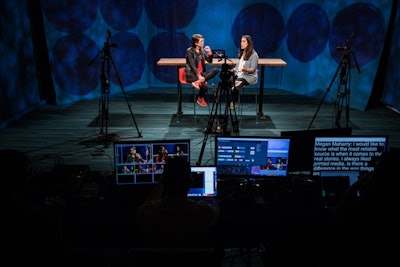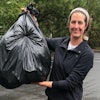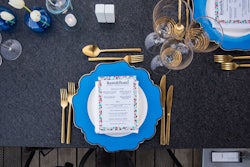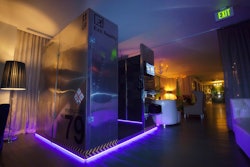
The annual TED conference is an interesting juxtaposition. On the one hand, it’s an exclusive event that requires an application for attendance and then a $10,000 ticket for those selected to be in the audience. But it’s also an event driven by its tagline, “Ideas Worth Spreading,” with more than 2,400 videos of its speakers viewable for free on its website.
Now the organization is trying a new strategy to expand its worldwide audience while upholding the special nature of the in-person experience. For the 2017 conference, which took place April 24 to 28 at the Vancouver Convention Centre, organizers used Facebook Live to stream interviews with nine presenters and to allow people to watch the conference’s inaugural session of Spanish-language speakers in real time.
“It’s an expensive and exclusive conference but it is a priority of ours to make sure that it doesn’t feel like the ideas themselves are exclusive in any way," said Nadia Rawls, director of social media and audience development for TED. "We want these ideas to be shared and democratized. We want this to be something that everyone around the world can participate in. And I don’t think that takes away from the experience of the conference itself. The conference is a smaller community that allows people to come together that week and get to know each other and just have a more curated experience.”
Rawls said she was particularly pleased with the Spanish session, which marked the official launch of TED en Español, an effort to create content and engagement in the Spanish-speaking world. TED launched a Spanish Facebook page shortly before the conference, and when the live session began on April 25, the page had about 270,000 followers. By the time the seven speakers had finished, the stream had attracted 682,000 live viewers. “That was pretty incredible because it is such an underdeveloped audience. It was incredible to see that much excitement and engagement for that session,” she said. To date, the Spanish session has more than one million total views.
For the second Facebook Live experience, TED partnered with Vox media company to conduct live interviews with nine speakers. The interviews took place in a small studio organizers built in a conference room at the convention center, where an editor on site was able to switch between three cameras in the room using Vidpresso technology. The hosts from Vox invited viewers to submit questions to the speakers on Facebook and a producer uploaded the questions to the host in a teleprompter.
“We have found that making Facebook Live interactive is one of the most essential parts of them being successful. It’s also creating the most value for our audience," said Rawls. "They typically have a lot of questions and things they want to know and giving them a chance to guide the conversation and giving them access to these speakers is one of the primary benefits of it. It’s really wonderful to hear from people around the world and their perspective on what they might want to know about the refugee crisis, or what they might want to know about how we can protect the environment. Getting that global perspective is one of the things that would be very difficult for us to do without a product like Facebook Live.”
To add a fun element to the live experience, Rawls gave her phone to Damian Kulash, lead singer of the band OK Go, and allowed him to do an impromptu Facebook Live stream on the final day of the conference. Kulash started backstage and then walked into the theater and chatted with attendees as they awaited the final session of speakers.
There have been more than six million views for TED’s Facebook Live streams, more than 14,000 shares, and more than 8,000 comments submitted to the speakers. Rawls said conference organizers now are making plans to use Facebook Live at TEDWomen in November, where they may make the Facebook Live interview sessions part of the regular conference schedule and allow in-person attendees to participate while on site.



















